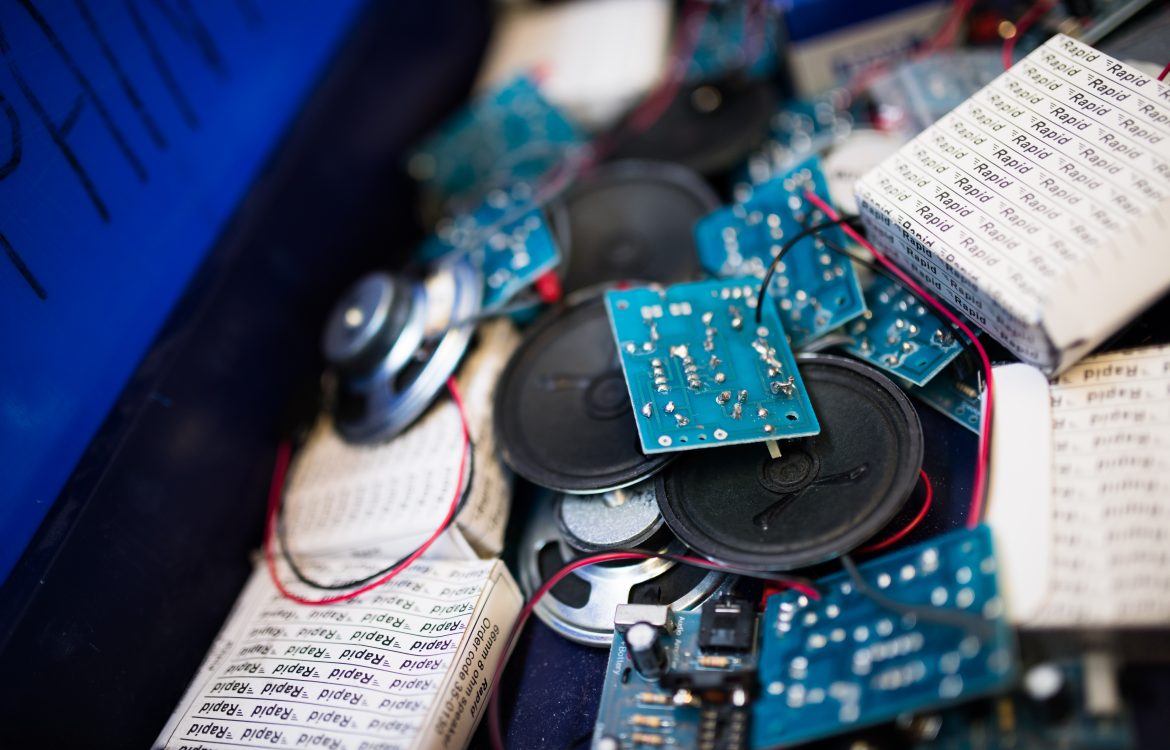
Programmable Engineering Systems
WHAT DO STUDENTS LEARN IN ENGINEERING PROGRAMMABLE SYSTEMS IN KEY STAGE 4?
This is a vocational course that teaches students about designing, making and understanding electronic circuits, programming microcontroller circuits and how computers are used in engineering for designing and manufacturing electronic products. It is a truly modern course that is relevant to the modern world and our future as a largely automated workforce.
HOW WILL STUDENTS LEARN IN THIS COURSE INCLUDING HOME LEARNING?
Students learn through a mixture of practical and theory tasks. Students design, make and test circuits in a variety of ways. ICT is used frequently to aid learning and carry out some of the practical tasks. Home learning tasks are typically Microsoft Quizzes that help to consolidate the learning undertaken in class.
You can try a sample home learning task here
HOW ARE STUDENTS ASSESSED IN THIS COURSE?
This course is made up of 3 units. The largest unit an external marked exam which is taken at the end of Year 11 and is worth 40% of the final grade. The other 2 units are internally assessed pieces of coursework worth 30% each. Unit 1 is about designing, making and testing an electronic circuit. Unit 2 is about programming an electronic system to meet a given specification.
WHAT IS THE LEARNING SEQUENCE?
In Year 10 students learn about electronic principals – voltage, current, resistance, power and energy. These all underpin and support the physics curriculum that all students follow in their GCSE science curriculum.
Students learn about the following types of circuit.
- Sensing and amplification
- Timing circuits
- Logic circuits
- Counting circuits
Students will make circuits to develop their practical skills as well as supporting the learning of the theoretical knowledge.
At the end of Year 10, students will complete a piece of coursework on modelling, making and testing a given circuit. This work is 30% of the final grade.
In Year 11 students will be introduced to programmable circuits (following on from the learning in year 9 EDT.) Students will develop a working knowledge of programming techniques working with a wide variety of input and output components. To do this, a systems design approach will be used.
Students will then complete an exam board task as a piece of coursework to demonstrate and assess their knowledge of programming. This work is completed in January and worth 30% of the final grade.
In year 11 students will further develop their knowledge of making circuits and look at mass production strategies.
Induction and electromagnets will also be covered, which again, supports the learning undertaken in the science GCSE curriculum.
WHAT QUALIFICATION IS GAINED FROM WHICH EXAM BOARD?
OCR National Level 1 or 2
LINK TO EXAM BOARD SPECIFICATION
Cambridge Nationals – Engineering Programmable Systems Level 1/Level 2 – J824 – OCR
HOW IS IT GRADED?
Grades available are Level 1 Pass (1), L1 Merit (2) Level 1 Distinction (3), Level 2 Pass (4), Level 2 Merit (5.5), Level 2 Distinction (7) Level 2 Distinction* (8.5)
GCSE grade equivalents in brackets
WHAT FURTHER EDUCATION AND/OR CAREERS CAN THIS QUALIFICATION LEAD TO?
Students can progress to study Btec Level 3 Engineering or A Level Product design in our 6th form. This can then lead to numerous design or engineering careers, including apprenticeships. To read further about engineering careers click on this link.
Students who wish to leave school at 16 must still continue in their education until they are 18. Local colleges provide courses such as electrical and electronic engineering to name a few.
Apprenticeships are also a great option for school leavers. Engineering in the local area continues to be a major provider of employment. Companies such as Rolls Royce, Toyota, Marstons, Bombardier, Nestle and JCB all take on apprentices each year as well as the many smaller engineering firms in the local area.
